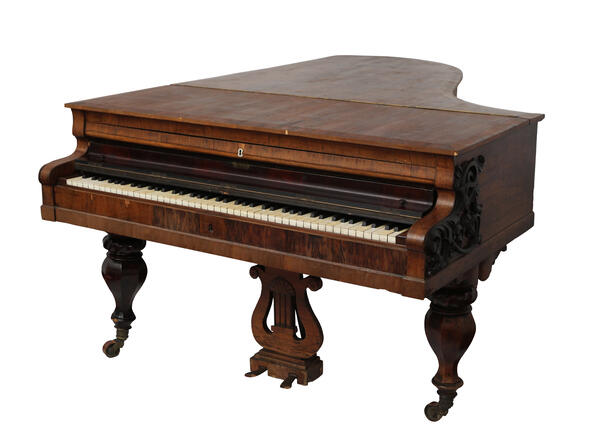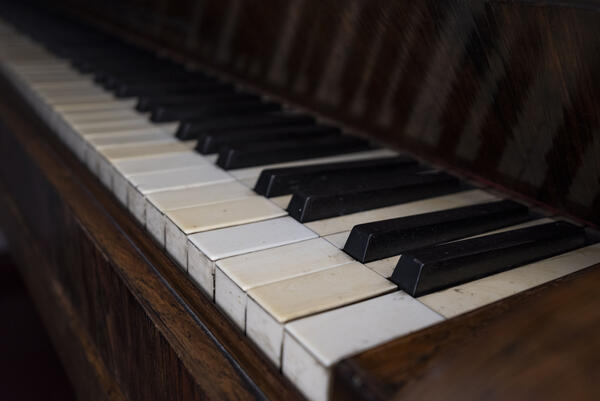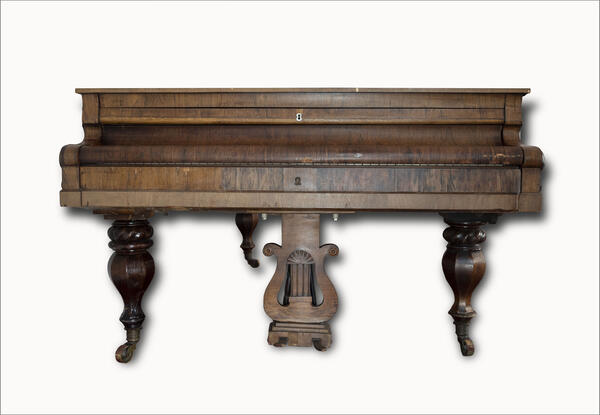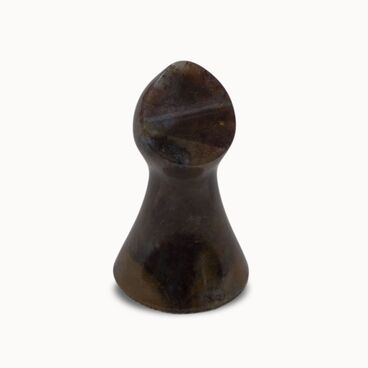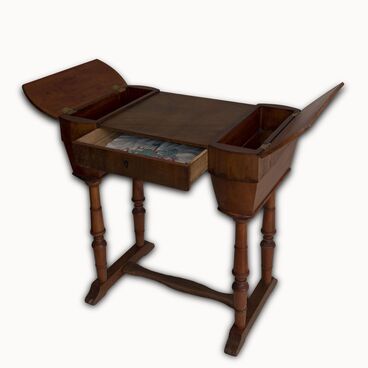The 19th-century atmosphere of the Decembrists House Museum display of the living room interiors is complemented by an antique grand piano made by the Irmler enterprise (J.G. Irmler).
The mahogany piano case resting on carved legs features several ornately carved onlays. The piano has a standard keyboard with 88 ivory keys. The cast-iron frame with bronze inlays is decorated with an elegant floral pattern. The strings are made of metal. Earlier models had strings made of ox tendon, which had a softer sound due to their stretching quality. In total, the Irmler company produced around 45,000 copies of such instruments throughout the Old and New Worlds.
Vasily Petrovich Ivashev was a versatile person: he wrote poetry, translated works from French, and studied painting and music. His paintings and drawings have survived to this day. They include views of Chita and Petrovsky Zavod, the inside of prison cells and room interiors in his wife’s house, self-portraits, blueprints of the Chita jail and Petrovsky prison made in watercolor, ink, crayon, and sepia, as well as blueprints and façades of his Turinsk house. His versions of the tombstone for his wife Kamilla’s grave have also been preserved.
After Ivashev had moved to Turinsk with his family in 1836, he started to dedicate a lot of time to music, painting, and literary work. Despite being devastated after Kamilla’s death, he continued to write, read books, and paint, as well as taught his five-year-old daughter Masha to read, and gave piano lessons to Olya — the daughter of the Decembrist Ivan Annenkov.
In 1936, a signed musical composition called “Fisherman”, preserved by Ivashev’s descendants, was transferred to the State Literary Museum. The music and words were composed by Vasily Ivashev himself. The first lines of the elegy were inspired by Goethe’s poem “The Fisherman”.
The text of the elegy “Fisherman” reads,
The mahogany piano case resting on carved legs features several ornately carved onlays. The piano has a standard keyboard with 88 ivory keys. The cast-iron frame with bronze inlays is decorated with an elegant floral pattern. The strings are made of metal. Earlier models had strings made of ox tendon, which had a softer sound due to their stretching quality. In total, the Irmler company produced around 45,000 copies of such instruments throughout the Old and New Worlds.
Vasily Petrovich Ivashev was a versatile person: he wrote poetry, translated works from French, and studied painting and music. His paintings and drawings have survived to this day. They include views of Chita and Petrovsky Zavod, the inside of prison cells and room interiors in his wife’s house, self-portraits, blueprints of the Chita jail and Petrovsky prison made in watercolor, ink, crayon, and sepia, as well as blueprints and façades of his Turinsk house. His versions of the tombstone for his wife Kamilla’s grave have also been preserved.
After Ivashev had moved to Turinsk with his family in 1836, he started to dedicate a lot of time to music, painting, and literary work. Despite being devastated after Kamilla’s death, he continued to write, read books, and paint, as well as taught his five-year-old daughter Masha to read, and gave piano lessons to Olya — the daughter of the Decembrist Ivan Annenkov.
In 1936, a signed musical composition called “Fisherman”, preserved by Ivashev’s descendants, was transferred to the State Literary Museum. The music and words were composed by Vasily Ivashev himself. The first lines of the elegy were inspired by Goethe’s poem “The Fisherman”.
The text of the elegy “Fisherman” reads,

